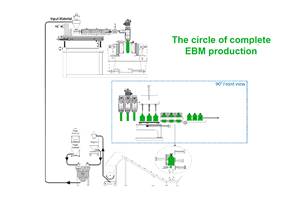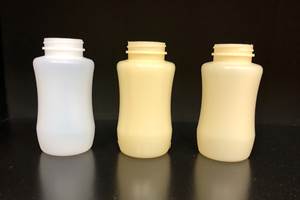All Signs Positive for Packaging in 2016
Leading indicators point to growth in this market segment.
In U.S. government statistics, packaging does not count as an end product in itself. So analysts like myself cannot just grab industrial production data for packaging to see how the industry is performing. However, there are three primary industries that drive packaging demand: food, retail (primarily trash and t-shirt bags), and industrial (primarily shipping materials). So by tracking what is happening in the food/beverage, clothing/footwear, and trucking industries, we can get a feel for what is happening in packaging.
Real Disposable Income. Real disposable income is one of the earliest leading indicators in the economy. October 2015, real disposable income was at an all-time high of nearly $12.4 billion (seasonally adjusted annual rate), and the prior six months of income data was revised higher. In October, disposable income grew 3.9% compared with one year ago. This was the fastest month-over-month growth since January 2015. The growth rate has accelerated since last March. The annual rate of change accelerated to 3.7%, which was the fastest growth since January 2007. The trend in real disposable is a very positive sign for future packaging demand.
Food Packaging. Somewhat surprisingly, real disposable income tends to lead food and beverage (F&B) spending by almost a year. F&B spending was virtually flat for most of 2015. But with the strong growth in income, F&B spending should see accelerating growth in 2016. In turn, F&B spending leads food and beverage production. F&B production is already growing at nearly its fastest rate in eight years. If F&B spending continues to grow at an accelerating rate, then food and beverage spending will continue to see accelerating growth. Food packaging seems poised for significant growth in 2016.
Retail Packaging. Probably the best proxy for retail packaging is the clothing and footwear industry. Consumer spending on clothing and footwear has been growing at an accelerating rate since the fall of 2014. Other than the spike in 2011, the current rate of growth in clothing spending is the fastest since late 2006. Production of clothing and footwear has been growing at a moderately accelerating rate, but given the rapid growth in spending, it seems that production has much more room for further growth. Here again, the trends seem very positive for retail packaging.
Institutional Packaging. Institutional packaging consists primarily of stretch film, sheet, and tubing, but consumer and industrial product liners and shrink film also are a significant part of institutional packaging. Since all this packaging is used to ship products, tracking the changes in the trucking industry can provide a good estimate of what is happening with institutional packaging.
The Bureau of Transportation Services computes a transportation index specifically for the freight industry. This index is at or near its all-time high—nearly 20% higher than in 2000 and roughly 10% higher than in 2007. However, the rate of growth was relatively flat in 2014 and even decelerated somewhat in 2015. The growth rate is still strong enough to be a positive indicator for packaging demand, but the fact that the growth rate is decelerating indicates that institutional packaging is probably the weakest of the three packaging markets discussed here.
ABOUT THE AUTHOR
Steven Kline Jr. is part of the fourth-generation ownership team of Cincinnati-based Gardner Business Media, which is the publisher of Plastics Technology. He is currently the company’s director of market intelligence. Contact: (513) 527-8800 email:skline2@gardnerweb.com; blog: gardnerweb.com/economics/blog
Related Content
Get Color Changes Right In Extrusion Blow Molding
Follow these best practices to minimize loss of time, material and labor during color changes in molding containers from bottles to jerrycans. The authors explore what this means for each step of the process, from raw-material infeed to handling and reprocessing tails and trim.
Read MoreMultilayer Solutions to Challenges in Blow Molding with PCR
For extrusion blow molders, challenges of price and availability of postconsumer recycled resins can be addressed with a variety of multilayer technologies, which also offer solutions to issues with color, processability, mechanical properties and chemical migration in PCR materials.
Read MoreHow to Extrusion Blow Mold PHA/PLA Blends
You need to pay attention to the inherent characteristics of biopolymers PHA/PLA materials when setting process parameters to realize better and more consistent outcomes.
Read MoreImpacts of Auto’s Switch to Sustainability
Of all the trends you can see at NPE2024, this one is BIG. Not only is the auto industry transitioning to electrification but there are concerted efforts to modify the materials used, especially polymers, for interior applications.
Read MoreRead Next
See Recyclers Close the Loop on Trade Show Production Scrap at NPE2024
A collaboration between show organizer PLASTICS, recycler CPR and size reduction experts WEIMA and Conair recovered and recycled all production scrap at NPE2024.
Read MoreLead the Conversation, Change the Conversation
Coverage of single-use plastics can be both misleading and demoralizing. Here are 10 tips for changing the perception of the plastics industry at your company and in your community.
Read MoreMaking the Circular Economy a Reality
Driven by brand owner demands and new worldwide legislation, the entire supply chain is working toward the shift to circularity, with some evidence the circular economy has already begun.
Read More
.JPG;width=70;height=70;mode=crop)






















